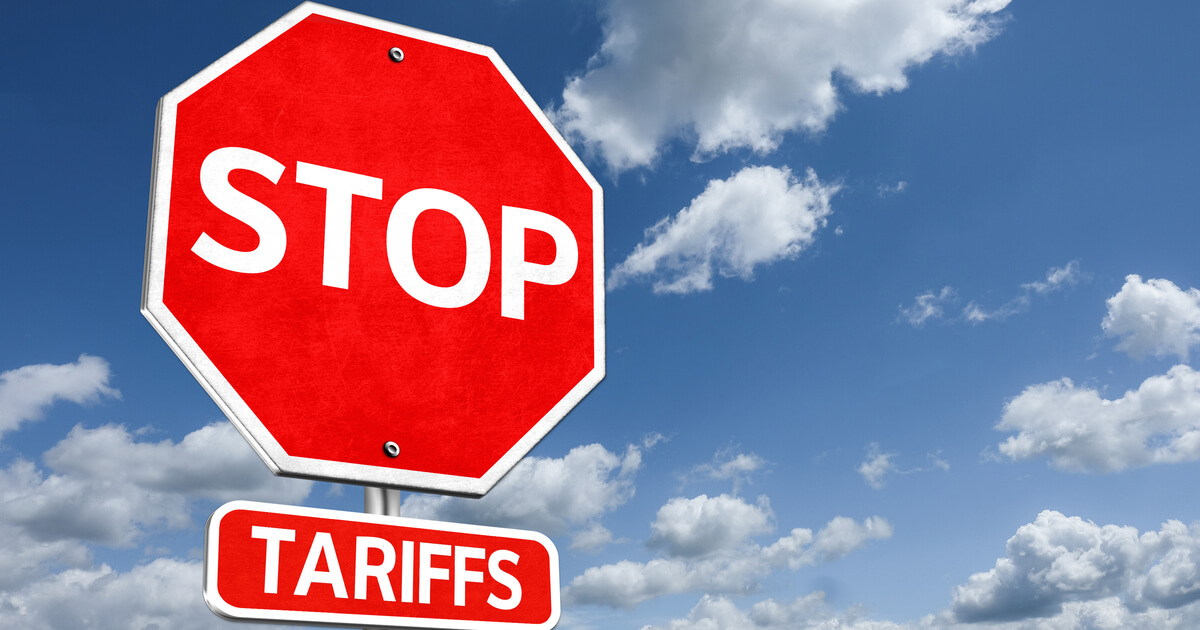
Posts Global Market protectionism 934 26 March 2021
The Ukrainian market remains quite open, and the mechanism of its protection is very weak
According to the estimations of the World Trade Organization, the coronavirus pandemic shrank the global trade by 32% in 2020. This downward trend corresponds to the worst-case scenario. In April 2020, at the very height of the coronavirus pandemic, the WTO projected a 13% to 32% decline in the global trade by the end of the year.
To compensate the loss caused by the lockdown and support its economy, many countries toughened the existing safeguard measures. Right now, trade barriers seem to be the simplest and the most effective instrument of market protection. To achieve its goals, economies use all means available to them — both legal ones and those balancing on a fine line — in a rather aggressive way.
GMK Center did a research to see the whole picture of the global and Ukrainian safeguards in this struggle for markets.
The Trump effect
The current pattern of global protectionism was to a large extent determined by the U.S. initiatives. The ex-U.S. President Donald Trump has managed to have half the world and even many of his allies ticked off because of the trade barriers that he put under the guise of ‘protection of national producers.’ His key decisions include introduction of a 25% duty on steel imports and a 10% duty on aluminum imports in 2018 and starting a trade war with China that broke out in the same year, and then with the EU. Though some countries (South Korea, Brazil, Canada and Mexico) were ultimately exempted from these duties, they now have to cope with the quota thing anyway.
The duties had the expected effect — imports fell drastically, prices hiked, and American steelmakers increased their earnings and investments in new capacities. However, steel consumption in the U.S. remains almost flat since the 2014 peak. Moreover, high prices for steel products mean lost jobs, higher costs and lower competitiveness for domestic consumers. All the benefits brought by the increased duties were lost in 2019 as metal prices went down worldwide. Nevertheless, these ambiguous effects do not prevent the U.S. producers from advocating extension of the safeguards.
Trump’s other initiatives failed too. According to Oxford Economics and the US-China Business Council, the U.S. lost some 245 thousand jobs at the peak of the trade disputes with China. Even signing the first phase of the U.S.-China trade deal did not help the U.S. turn the tables— China bought from the U.S. less than 60% of the initial target, thus bringing it $100 billion in sales revenues instead of the expected $173.1 billion.
Many economic partners of the U.S. looked at newly elected Joe Biden with a cautious hope — they believed the new president might demonstrate a more reasonable foreign policy. But Biden did not give up Trump’s legacy and signed an executive order to tighten ‘Buy American’ requirements in late January. As reported earlier, Donald Trump signed an executive order in July 2019 requiring that 95% of steel and iron used in federal contracts be American-made.
Of course, import duties are a different story. Candidate Biden promised to revise all Trump’s tariffs. President Biden revised no steel duties so far. Local producers and congressmen strongly support their extension. Besides, an American court denied the affected steel importer’s challenge to the duties and upheld their lawfulness. However, lawfulness of the duties remains an open question so far — the case is now being considered at the WHO. Meanwhile, nothing suggests that Biden is going to significantly reduce the steel duties.
“The U.S. is unlikely to relax its trade policy. The world can expect certain decisions, but their format will be soft and will not allow changing the rules of the game, nor the balance of powers in the market,” explains Andrii Tarasenko, GMK Center Chief Analyst.
What the U.S. trading partners expect is at least reduction of the duty, if not lifting it at all, and reduced tension in the commercial relations — with China in particular. Thus, the European Union is ready to lift its safeguard tariffs on $3.4 billion of American goods if Biden removes the steel import duties. The ice seems to have already been broken — the U.S. and the EU agreed on a four-months’ mutual suspension of duties at the beginning of March.
It is worth reminding that the United States and the European Union apply mutual safeguards against each other, which is Trump’s initiative. Following the introduction of the steel import duty by the U.S. in 2018, the EU had no choice but to respond to the whole world in 2019. It is because the European market faced a huge wave of imports that used to target the U.S.
European style of protectionism
The European Union has probably demonstrated the toughest market protection amid the pandemic. The reasons for Europe’s ‘protectionism rush’ are quite understandable — while European steelmakers were reducing production and suspended their blast furnaces during the spring lockdown, other countries wasted no time and kept working on meeting steel demand. As a result, according to the World Bank’s forecast, the Eurozone’s GDP will fall by 7.4% in 2020. While the U.S. economy, for example, declined by only 3.5% last year. According to the estimates of the European Steel Association (EUROFER), apparent consumption in the EU will fall by 13% to 134 million tons in 2020.
Given the situation, line associations and a number of EU countries started advocating the extension of the steel import quotas, that are supposed to expire on 30 June, and toughening protection of the European market. In April last year, EUROFER urged the European Commission to cut steel import quotas by 75% for six months as well as reduce the amount of steel import duties applicable when the set quotas are exceeded. In May, EUROFER lobbied for reduction of individual country import caps (the current global quota is 30%), prohibition of rolling of unused quotas over into the next period, and at the same time reduction of the steel import duty from 25% to 22%.
The European Commission will conduct a repeated investigation of the existing quota system aimed at restricting steel imports. The quotas can be extended or replaced with other safeguards, such as duties, for example.
The WTO says that the EU may extend the quotas for one more year at the most. A longer period would require very hard evidence of damage to the European steel industry. The thing is that where a safeguard is in effect for a period of over three years, other member countries of the WTO may claim compensation for the loss of access to the EU market, and where the negotiations on such compensation fail, they can respond with countermeasures.
“The extension of these measures may, and I’m sure will, create a serious risk that certain member countries of the WTO, including Ukraine, might increase import duties on goods from the EU in an attempt to compensate the lost access to the EU market. This means that extension of the special safeguard measures beyond 30 June 2021 will be very risky, difficult and expensive. And here we’re no longer talking about protection of the European market from steel imports — it’s about the losses that the European economy will suffer in general. For example, Korea might increase import duties on European cars, and Ukraine might raise import duties on European dairy products. It’s not only about steel anymore. That may be any product category,” underlines Yuriy Rudyuk, partner at Brussels law firm Van Bael & Bellis.
Nevertheless, the EU is going to tighten its trade policy. It should be noted, however, that the powerful protection of the European market has already badly backfired on the European Union.
“The European market is overprotected. Last autumn saw a drastic hike in demand, and local suppliers were simply unable to meet it, while imports were restricted. That’s why the prices grew by the very same 25% to set off the duty,” explains Andrii Tarasenko.
Struggle for the price
Interestingly, protectionism caused ‘internal wars.’ A number of line associations in the EU and the U.S. representing consumers of steel products embarked on lobbying reduction or lifting of trade restrictions. Their positions strengthened as prices for steel products surged. It is because prices went up largely due to restricted imports and inability of European producers to sell their own goods.
Admittedly though, the request of this group of consumers, which is in the minority, will hardly be taken into account since it is shadowed by opinions of much more influential lobbyists in the internal markets, such as EUROFER, the American Iron and Steel Institute and many other associations and producers themselves. In a struggle between producers and consumers, the former are much more likely to win as they are backed by governments.
The Turkish Gambit
Turkey is demonstrating an example of aggressive and quite effective protectionism policy. In May 2020, the European Commission started an anti-dumping investigation into HRC imports from Turkey. Europe threatened to resort to retroactive imposition of import duty. The dumping was ultimately proven, and on 14 January provisional duties came into force for a period of six months, their margin being insignificant however — 4.8% to 7.6% depending on the producer. The final decision in this case is expected in July.
In addition, the EU is continuing an anti-dumping investigation on Turkish steelmakers that allegedly are benefiting from government subsidies that the WTO thinks to be unlawful.
In its turn, Turkey itself initiated a mirror investigation against European hot-rolled products at the end of last year. And that despite the fact that the balance is leaning towards Turkish exports, and introduction of restrictions by Europe might badly affect the local producers. Europe used to account for some 40% of Turkish exports.
“This is one more case demonstrating the approach of certain countries to conducting anti-dumping investigations. In fact, that is an instrument of pressure — both economic and political. Turkey is implementing an aggressive trade policy and keeps trying to push forward cases that seem to be hopeless. For example, it initiated a WTO dispute against Section 232 in the U.S. and tariff quotas in the EU,” says Andrii Tarasenko.
Back earlier, by the way, in mid-April last year Turkey increased duties on approximately 300 commodities, including steel products, to protect its producers. The duties were extended until the end of last year. Those measures did not affect the EU or other countries that signed free trade agreements with Turkey.
Who are the arbiters?
The current conditions of global trade have significantly desacralized international arbiters like the WTO. Countries put trade barriers here and now, and if someone intends to challenge them, the dispute may take years.
The EU and the U.S. hope to reform the WTO together. In particular, they’d like to toughen the rules against distortion of competition and recover the binding system of dispute resolution. At the same time, the European Union invented its own rules and enacted a regulation allowing to evade the TWO rules. In particular, the EU authorized itself to protect its interests at the WTO in accordance with bilateral agreements where a trade dispute is blocked by the other party.
At the same time, the WTO still remains the last arbiter whose decisions are recognized by everyone. The WTO is the place where complaints of China, the EU, Turkey and other countries against Trump’s duties have been collecting dust since 2019. A decision in this case is expected in H2 2021.
Without looking up to anyone, the European Commission introduces new restrictions in the form of ‘carbon tax’ (Carbon Border Adjustment — CBA) for which other countries will pay €5–14 billion and that will cost Ukraine approximately €566.3 million a year. Although this mechanism is supported by the U.S., Canada and other countries, environmental subsidies and ‘carbon tax’ are rather doubtful in the context of international trade law.
“CBA is nothing but a duty, a classical trade barrier. And that means that everyone who will suffer from it will hit back. That will start a new wave of devastating protectionism that the world has last seen only during the Great Depression. But what’s even worse, CBA is a manifestation of economic egoism that exceeds climate ambitions. In addition, there is a clear consensus on certain matters — the main goal of the new rules of the EU is protection from imports. So, it happens that it’s not about ‘green’ recovery and transformation, but rather about removal of competitors,” says Taras Kachka, Deputy Head of the Ministry of Economy, Trade Representative of Ukraine.
That decision can also be challenged before the WTO. The organization is now creating a new group to discuss CBA-related matters. The European Union is concerned about possible countermeasures — not without a reason. The WTO will attempt to establish new rules of trade in the new ‘carbon reality.’ On the other hand, the EU asks the WTO to facilitate the removal of Indonesia’s export restrictions on raw materials used in stainless steel production. So, the European Union is indeed concerned about ‘unlawful restrictions’ in cases like this. What we see today is that the main rule of global trade is no rules at all. All countries are struggling to succeed amid this uncertainty.
Regionalization of trade based on bilateral free trade agreements is a new global trend. Needless to say, this format also creates risks for national producers, but here everything depends on your negotiation skills.
“It all depends on what terms you negotiate under a free trade agreement. The parties may agree to not impose safeguard measures against each other. Or they may do so. The EU-Ukraine Association Agreement allows imposing safeguard measures. However, they should be proportional and aiming at prevention of damage or compensation of trade losses as such,” explains Veronika Movchan, Academic Director of the Institute for Economic Research and Policy Consulting (ERI).
Our state of affairs
Ukraine is becoming increasingly vulnerable to safeguard measures taken by our trading partners. According to the Ministry of Economy, domestic producers are currently subject to 36 safeguard measures (anti-dumping, countervailing and special duties and quotas), and all of them apply to iron and steel and products made of them. And new measures are constantly adopted.
In fact, Ukraine does not have a firm position, arguments and political will to implement its own aggressive protectionism policy. This may be illustrated by the situation around the draft localization law, which (despite having minimal impact on European companies’ business) triggers negative response from European officials. Responses from Ukrainian authorities’ representatives showed that no one would contradict the ‘respectable people.’
The Ukrainian market still remains quite open, and Ukraine’s mechanism of its protection is very weak. Besides, our country does not seem to be efficient in settling trade disputes. Of course, Ukraine will win if the world’s major players decide to at least dig in the hatchet in this trade war. Easing of some requirements in the nearby EU market is more desirable than in the distant U.S. market.
In general, Andrii Tarasenko mentions the following necessary measures to protect the domestic market and fight against protectionism:
- Commercial diplomacy;
- Bilateral trade agreements (FTA);
- Active position of the government in anti-dumping and judicial proceedings;
- Engaging international market professionals to protect export interests.
A striking example is Ukraine’s position in negotiations with other countries, for example, in the long-running dialogue on FTA with Turkey.
“Negotiations with Turkey have been quite active in recent years. I assume the negotiations have been problematic, as Turkey doesn’t agree to our terms. When compared to Ukrainian trade barriers, Turkish ones are higher. Their agricultural market protection is much tougher than Ukraine’s one within the WTO. Turkey stood at the origins of this organization, so it takes many measures that new WTO members can’t afford. Ukraine joined the WTO more recently, so our trade regime is quite loose,” says Veronika Movchan.
Ukraine’s goal is to gain access to the Turkish agricultural market. This is probably possible through the search for compromise. The main issue is to make this agreement as beneficial for Ukraine as possible. This is why the negotiations are slow, as we are looking for options to get the most out of it. The ERI research shows that the Ukrainian agro-industrial complex will significantly benefit from FTA with Turkey.
“The Association Agreement with the EU together with the EU-Turkey Customs Union for industrial goods should allow Ukrainian goods to enter the Turkish market, which is the common customs market with the European Union, duty-free. But in fact, Turkey does not keep these promises. Alternatively, we can try to export Ukrainian products to Turkey through the EU,” sums up Veronika Movchan. “The main issue for all further negotiations on FTA is to reach an agreement on the opening of other countries’ markets and to make it beneficial for Ukraine.”




